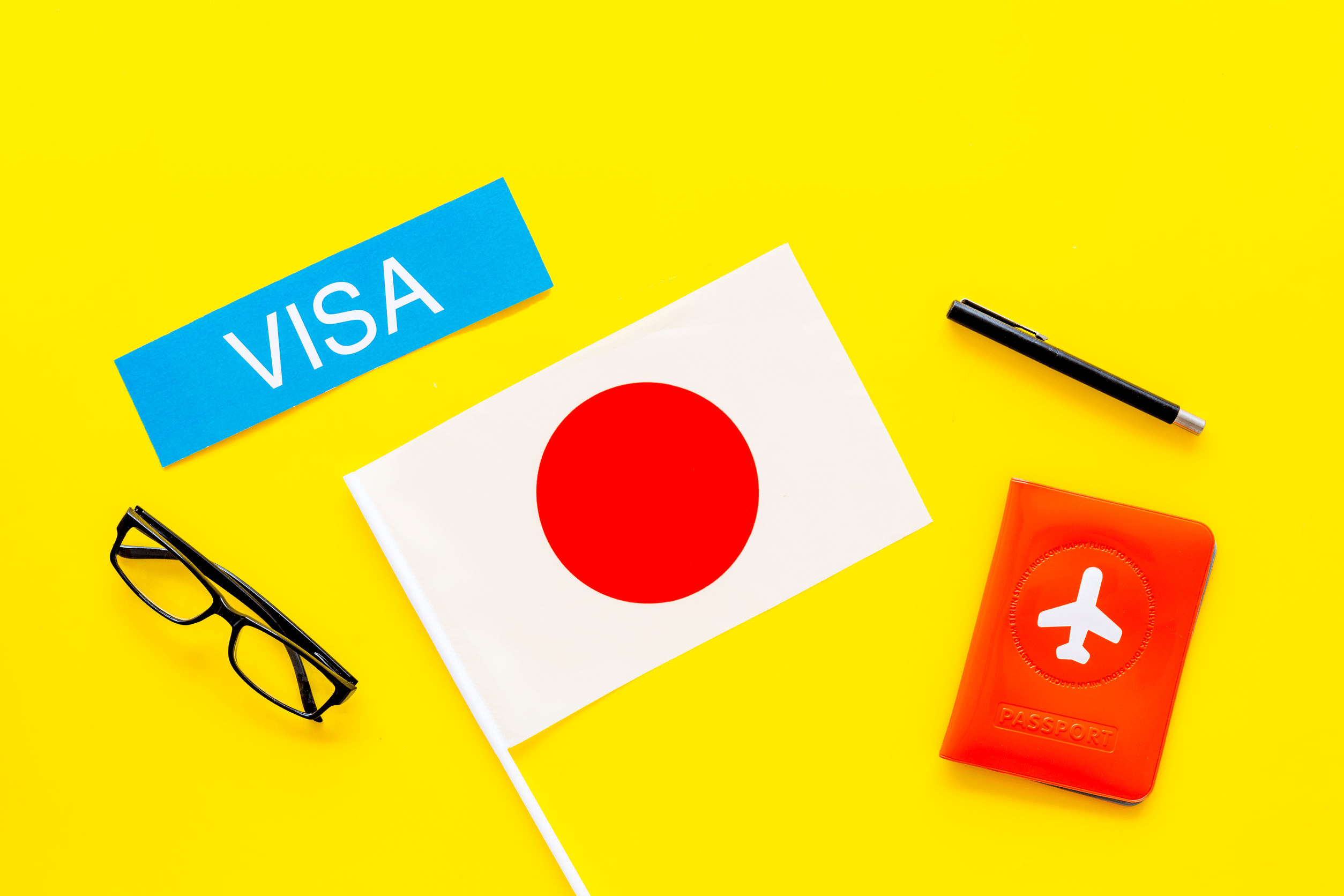
Costa Rica has a new type Visa for Foreigners. If you've ever dreamed of living in Costa Rica, this visa may be something you are interested in. It is known as a Digital Nomad Visa, and is a great way for you to enjoy Costa Rica's tranquility and natural wonders.
The standard tourist visa was the most popular visa option for digital nomads living in Costa Rica before the new law. While this visa is still the most preferred for remote workers, it is not necessarily the only one. Other visa options are available such as the Pensionado Program for individuals who want to obtain a temporary residence permit.
Cayman Islands offers another option for digital nomads. Cayman Islands offers a program that allows residents to stay in the territory up to two years. But you cannot work here beyond the time you are approved. Barbados offers a similar program that allows digital nomads to stay on the island for 12 months.

Many opportunities exist for digital nomads in the Cayman Islands. These include a car rental, co-working spaces, and electric car rentals. Digital nomads may also be able to stay in certain areas through the Global Citizen Concierge Program.
Although the new law does not allow foreigners to obtain a Costa Rican digital nomadic visa, it will be available by mid-2022. There are many countries that will accept digital nomads, which you can use in the interim. Curacao Barbados, Mauritius and Barbados have programs that allow digital nomadic workers to work remotely.
Dominica also offers a digital nomad visa to remote workers, which allows them to live in the wild for up 18 months. They'll be allowed to work remotely and can also get a driver’s licence.
The new law will bring more foreign workers into the country, which is one of its most exciting features. In fact, the law has been approved by the National Assembly's Tourism Commission. The benefits of this type of visa will be embraced by digital nomads more frequently.

The best part about the new Costa Rican law is that there are a variety of ways to make the most of this type of visa. The visa can be used to start a company, for digital nomads, for long-stay visas, for all three.
Whether you choose to stay in the country for a year or longer, you'll be able to take advantage of Costa Rica's rich culture and amazing natural attractions. And if you don't have the money for a home, you can find budget-friendly beachfront apartments. All you have to do is follow the right steps.
FAQ
How to get cheap flights to Asia
Skyscanner.com can help you save money on your airfares. Search hundreds of airlines to compare prices across different websites.
Once you find the flight you wish to book, click "book" then fill in all required information. Then wait until your ticket arrives in the mail.
Don't rush to purchase your ticket. Sometimes tickets sell quickly. Plus, you can always change your mind later on.
What jobs are digital nomads most often employed in?
A digital nomad travels for work, usually between two cities. They live out their suitcases and travel where work takes them. Their lifestyle allows them to be flexible in how they work and when. Digital nomads work anywhere on the planet, including remote locations like islands, forests and mountains.
Most common work includes writing, web development and software engineering.
These digital nomads often work remotely from their homes while on the road. This allows them to travel more easily and save on living expenses. Many digital nomads also prefer to travel alone. Some people find it easier to get connected with local communities, as they don't have to be based in one particular location.
What does a normal day look like for a digital nomadic?
A digital nomad may have a different day depending on their location. This could include:
-
Set up new logins and accounts
-
Content creation (articles, blogs)
-
Researching new market opportunities
-
New contacts
-
Finding new opportunities
-
Contract negotiations
-
Working on projects
You must master the art of juggling all aspects of your life in order to become a digital nomad.
You need to set a time and schedule that is flexible enough to allow you finish your tasks and still have fun.
You might have a morning routine, for example, of checking email and scheduling meetings. After you've finished your lunch, you can take a few minutes to relax.
After dinner, you start your evening routine. This involves checking social media, reading blogs, writing blog posts, and sending emails. The rest of the night is yours alone.
This will ensure that you are not overwhelmed and allow you to maximize your productivity during the day.
What's the best way to live a life that combines travel and work?
The best way to live a life of travel and work from abroad is not always clear. It differs depending on your goals, skills, personality, interests, financial situation, family, friends, location, etc. There are a few things we can be certain of that will make this lifestyle possible. These are:
-
Remote working
-
Staying in an Airbnb or similar Accommodation
-
Having no car (or none at all)
-
Being Self Employed
-
Spend less on your travels
These will be covered in detail.
How can you stay safe when living as a digital nomad?
Online is where you can meet your most friends and associates, so you won't stop living in the real world. You won't live entirely online, however, if you are a digital nomad. How do you balance traveling while staying safe?
First, ensure your computer is virus-free. This includes installing the most recent updates for Windows and Mac OS X, and making sure they are kept up-to-date.
Also, make sure that your software runs the latest version. Update your software immediately if it doesn't. If cloud services like Dropbox, iCloud or Box aren't working correctly, you could be locked out your files.
VPN (virtual Private Network) is a service that protects your internet connection even when you're not at home. It is possible that your ISP will charge additional for data usage overseas. Therefore, it is worth checking if you are eligible for a free trial.
In addition to protecting your privacy, a VPN encrypts your web traffic, making it harder for hackers to intercept your personal information. If connecting to public WiFi networks, consider downloading a VPN app onto your mobile device.
Make sure you have your phone charged. If you lose your wallet or passport, having access to your contact details could save you hours of wasted time trying to track someone down.
How much does it take to become a digital nomadic? How long will it take to become a digital nomad?
There are many ways that digital nomadism could be described. One definition of digital nomadism is "digital nomad", which can include freelancers as well entrepreneurs, independent contractors, travelers, expats, and anyone who moves frequently, but whose main residence remains in one place or country.
But, there are some who use the term to specifically refer to people who go online to find a job. They can live anywhere from six months to two years. To be considered a digital nomadic, you must do something online. You shouldn't just be traveling somewhere else.
Some digital nomads make enough income to provide for their needs without needing to look for work. Others make less that $10,000 per annum.
Nomad List reports that the average digital nomad's monthly salary is $3,500.
There is no minimum time to be considered a digital nomadic. Many people believe that you are already a digital nomad if you travel for work. Even if part-time work, you may still be eligible.
In fact, according to NomadList, the average length of stay for digital nomads is 3-6 months. That means you'll probably need to travel at least twice during that period.
Digital nomads can work from home which allows them to save on rent. Additionally, they can avoid commute costs.
It is not possible for everyone to be a digital nomad. It takes a lot planning and discipline. You need to have plenty of time.
These are some of the things you need to know if your goal is to be a digital nomad.
-
How much time are you willing to spend on your job?
-
What type of work are you going to do?
-
Where are you going to be based?
-
Will you need to relocate often?
-
Are you saving money?
-
Are you prepared to sacrifice some aspects of your life (such as relationships?)?
-
Are you able to afford to leave your job?
-
Do you ever think about what you would like after you leave work?
-
Are there any obstacles that prevent you from taking the leap?
-
Are there any questions you might have about being a digital nomadic?
-
Your lifestyle would be described in what way?
-
Would you recommend it?
-
Do you have any tips for digital nomads who are just starting out?
-
What advice would your advise to anyone considering becoming a digital nomad.
How do digital nomads get paid?
Upwork and Freelancer both offer great opportunities for remote jobs. They also make it simple for freelancers find clients.
They help you create a portfolio of your skills and showcase your experience. They can give feedback and track your projects.
In addition, plenty of online tools and apps can help you manage your time, communicate with potential employers, and even automate tasks.
There are also pitfalls. You may encounter scams or fake profiles when searching for a job. Some freelance platforms charge fees, but do not provide any value to their clients.
Your past clients could leave negative reviews. Or you might fall victim to identity theft.
The best way to avoid these problems is to vet the site carefully before signing up. You should look for testimonials and reviews. Do not trust employers that have not thoroughly vetted candidates.
You should be cautious of scammers working remotely as you will never be able to meet them face-to–face.
It won't be a problem if you're cautious.
Statistics
- They also offer trip cancellation insurance that covers up to 100% of the trip cost. (travelinglifestyle.net)
- According to Statistica Research Department, the number of digital nomads is increasing every day, with more than 15.5 million digital nomads in 2021. (gooverseas.com)
- In general, you can expect to pay around 5 to 10 percent of the total cost of your trip for travel insurance. (travelinglifestyle.net)
- 98% of claims are paid: Filing an insurance claim is relatively easy and seems faster than the industry average. (travelinglifestyle.net)
- All it takes is a 5% better profile and proposals than your competitors. (travelinglifestyle.net)
External Links
How To
How to get WiFi free all over the globe
Although there isn't free WiFi everywhere you can find it, there are plenty hotspots. Here are some places from around the world where you can connect to the internet for free:
-
Starbucks offers WiFi at all its locations. Look for the "WiFi Sign" near the cash register.
-
Airports usually have free Wi-Fi. Many airports offer charging points for laptops.
-
Some hotels offer WiFi for free. You will find signs advertising the free service near the front desk.
-
Many public libraries offer Internet access at no cost. You will only need your library card to get access.
-
These days, many restaurants offer Wi Fi at no charge. Ask for the password at check-in.
-
Wi-Fi is often free on trains. Google Maps will allow you to search for the train station name.
-
Many universities now offer free access to wireless networks. Look out for the icon labeled "Wireless" on the network icons.
-
While it might not seem like a place to have free Internet access in zoos, there are many that offer this perk. Look for the logo that indicates free Wi-Fi.
-
Museums almost always offer free Wi-Fi to visitors. Outside the museum entrance, look for a kiosk or information booth.
-
Trade shows and conventions often offer Wi-Fi free of charge, especially during evening hours. Look out for signs advertising WiFi availability at the event.
-
Most churches offer internet access for free to their members. Look for a notice posted somewhere inside the church.
-
Sometimes, gas stations offer Wi-Fi at no cost to customers. You will find the "Free Wi-Fi” sign near the pumps.
Here are five tips to help you connect.
-
Avoid public areas. Public Wi Fi networks are often password-protected, and require payment. If you are required to connect, look for a private network.
-
Use a VPN app. VPNs encrypt internet traffic and allow users to access their favorite sites without fear of surveillance. VPNs are especially helpful when connecting to public hotspots as they conceal your location.
-
Look for unsecured connections. Anyone can join unsecured networks. This makes them easier to pick up than secured networks. But they aren’t as secure as encrypted network.
-
Join a community. You can get free Internet access in certain communities, such as at local libraries, coffee shops, hotels, or other venues.
-
Bring your own device. Many airports offer Wi-Fi at no additional cost. Bring your tablet or laptop to avoid roaming fees.